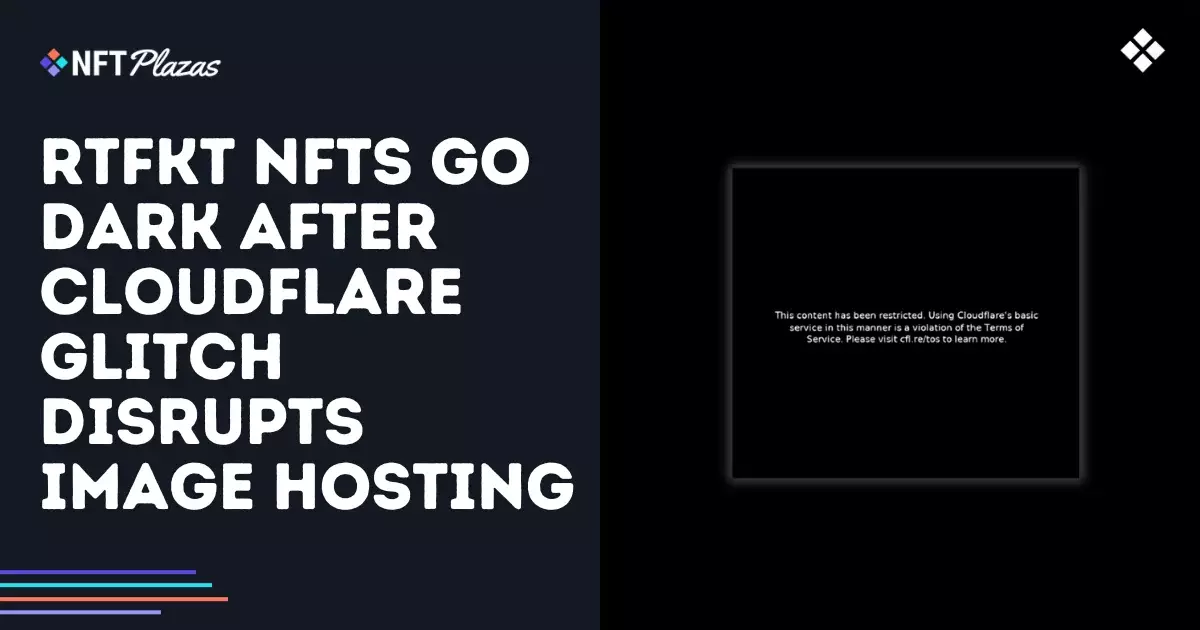In a tumultuous digital age, collectors faced a shocking revelation when images from the esteemed Ethereum NFT collections Clone X and Animus temporarily vanished. This incident, which transpired on April 24, raised pressing concerns regarding the fragility of digital ownership, especially when intertwined with centralized hosting services. While ownership and metadata remained intact on the blockchain, the visual components were stripped from collectors, leaving them staring at disheartening blank screens. The revelation that our digital treasures could evaporate at the whim of a service provider is not just troubling; it’s a glaring signal of the inherent risks within the current NFT landscape.
The Perils of Centralization
The root cause behind this lapse was the unfortunate downgrade of Cloudflare’s account, which was responsible for hosting critical content for RTFKT’s NFT collections. Samuel Cardillo, the former Head of Technology for RTFKT, emphasized that this was not a random glitch but a systematic failure—a precautionary reminder to all NFT enthusiasts about the dark side of centralized infrastructure. When tokens are housed within the definitive safety of the blockchain, the peripheral assets should have the same level of security. Instead, the reliance on an external service to present these assets became a double-edged sword, illustrating a vulnerability that could disrupt markets overnight. This incident compels us to reconsider the implications of centralization in an ostensibly decentralized world.
RTFKT: A Case Study in Resilience
Notably, RTFKT’s fallout highlights the paradox of innovation—while their technology has facilitated digital ownership, the underlying systems are still susceptible to failures. Though Nike shuttered RTFKT in late 2024, the community continues to rally around their cherished collections. This incident propelled Cardillo and his team into action, initiating plans to migrate media assets to Arweave, a decentralized storage solution ensuring permanence. This proactive transition reflects an essential lesson in resilience; those involved in the NFT space must adapt swiftly, evolving strategies that safeguard their investments against the whims of centralized platforms.
The Financial Commitment to Stability
The migration involves a significant financial investment estimated at around $2,800 to transfer 200GB of image data. While this might seem daunting, it’s a necessary expenditure if we are to secure the future of NFTs. This situation resonates with a broader trend where the value of digital assets demands that collectors undertake the responsibility of understanding and improving the infrastructure supporting their ownership. It’s not merely about possessing an NFT; it’s about ensuring that those assets remain viable and visible for years to come.
Revisiting Digital Ownership Ethics
Ultimately, this incident transcends technical glitches and monetary considerations; it urges collectors and creators alike to reassess their understanding of ownership in the digital realm. The volatility of digital assets provokes ethical dilemmas about what it means to truly own something in a world dictated by technological fragility. If the servers go down or the service provider fails, where does that leave collectors? As a society, we must endeavor to build a more robust framework around our digital assets—one that exemplifies permanence and trustworthiness. The echoes of the Clone X and Animus crisis should resonate far and wide, challenging us to find deeper solutions that underpin the exciting yet unpredictable NFT arena.

